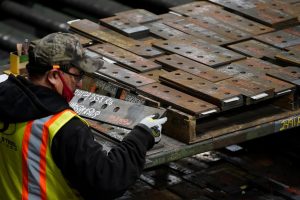Chip shortages are fueling inflation

New York (CNN Business)America’s factories are struggling with supply chain issues and material shortages. Now, that’s showing up in prices: in June, Manufacturers reported the biggest price jump in 42 years.
The Institute for Supply Management’s manufacturing price index rose to 92.1% last month, up 4.1 percentage points and hitting its highest mark since July 1979. It was the 13th straight month of price increases in the sector.
“Record-long raw-material lead times, wide-scale shortages of critical basic materials, rising commodities prices and difficulties in transporting products are continuing to affect all segments of the manufacturing economy,” said Timothy Fiore, chair of the ISM’s manufacturing business survey committee.
Demand continues to be strong, as manufacturers are having a hard time keeping up and prices keep rising. “Virtually all basic and intermediate manufacturing materials are experiencing price increases as a result of product scarcity,” Fiore said.
The only commodity that didn’t get more expensive last month was acetone, which is most commonly used as a solvent to manufacture plastics and other industrial products.
Overall, activity in the manufacturing sector, as measured by the purchasing managers index, waned in June. That index fell to 60.6%, down 0.6 percentage points and slightly below what economists had expected. Such a marginal slowdown is no surprise given the headwinds producers are facing, analysts at Action Economics said in a note.
At some point supply constraints will begin to affect activity, and while the high demand is a good thing for the recovery, the industry is in a tricky spot.
All of this is keeping pressure on inflation metrics and therefore also on the Federal Reserve, whose job it is to keep prices stable.
While the Fed maintains that it is comfortable with rising prices as the economy goes back to normal, each “highest price increase since” data point sends shivers down the spines of investors and economists.
In June, the Fed projected it would raise interest rates in 2023, though some central bank officials even think an uptick will be needed next year, not least in response to rising prices. But keeping inflation in check is only half of the Fed’s mandate: employment is the other. And while prices are rising like crazy, millions of workers remain jobless, making the Fed’s job even trickier.
Source: Read Full Article
